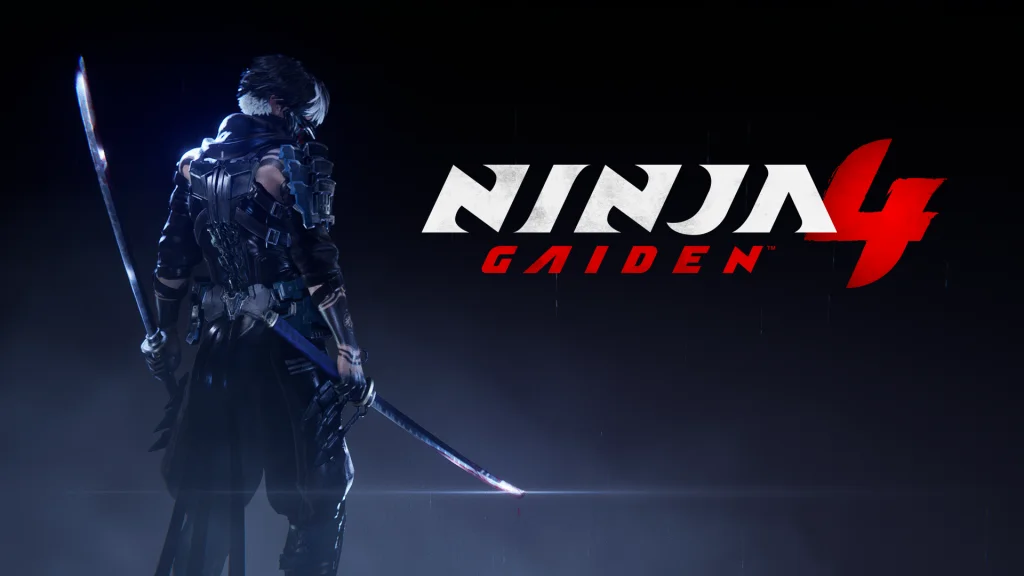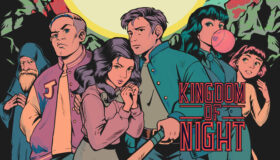The announcement of Ninja Gaiden 4 was a huge deal. It broke a 13-year silence for the main series, a gap that lasted two whole console generations. The last game, 2012’s Ninja Gaiden 3, had split the fanbase, leaving many longtime players feeling left out and hungry for a return to what made the series great. So, when the sequel was revealed, it felt like a shot at redemption. The hype grew even bigger when everyone learned who was making it: a landmark collaboration between the series’ original creators, Team Ninja, and the masters of stylish action, PlatinumGames.
This “dream team” partnership made everyone think this could be one of the best action games ever. Publisher Xbox Game Studios put tons of marketing muscle behind it, showing it off at big events and making it a day-one release on Game Pass. They also re-released a fan-favorite, Ninja Gaiden 2 Black, with a modern engine, which got veteran fans excited and set a high bar for what Ninja Gaiden 4 was expected to be. The stage was set for a massive comeback.
From the start, it was clear Ninja Gaiden 4 was meant to be a fresh start for the series. The biggest and most talked-about change was the introduction of the new main character, Yakumo. A young ninja from the mysterious Raven Clan, Yakumo’s story is set in a rainy, dystopian Tokyo. This immediately signaled a shift away from the series’ legendary hero, Ryu Hayabusa, to bring in a new face for a new generation.
The developers also wanted the game to be for everyone. For the hardcore fans who loved the brutal difficulty of the originals, the game promised to push their skills to the limit. At the same time, it welcomed newcomers with adjustable difficulty settings and accessibility options, trying to make the tough-as-nails series more approachable.
When Ninja Gaiden 4 launched on October 21, 2025, for PC, PS5, and Xbox Series X/S, the reviews were surprisingly consistent. Scores landed in the low-to-mid 80s, and players on Steam gave it a “Very Positive” rating. But those numbers don’t tell the whole story. Almost everyone agrees: Ninja Gaiden 4 is a game of two completely different halves. The combat system was praised as phenomenal, a masterpiece that perfectly blended the styles of the two developers. However, that amazing combat was stuck inside a boring package. Nearly everything else—the story, characters, level design, and world—was seen as a major letdown.
This uneven quality seems like a direct result of who made the game. Team Ninja and PlatinumGames are both famous for their incredible action gameplay, but they’re also known for having weaker stories and worlds. Instead of one studio’s strengths covering the other’s weaknesses, their shared focus created a blind spot. They made a world-class combat system, but the rest of the game feels hollow, like a “one-trick pony.”
A Symphony of Steel: The Near-Perfect Combat
The combat in Ninja Gaiden 4 is its best feature and the main reason for all the praise. It’s a masterful mix of the two developers’ styles, creating a system that feels both familiar to old fans and excitingly new. The core gameplay is pure Ninja Gaiden. It keeps the tough, fast, and precise feel the series is known for. Enemies are smart, aggressive, and can kill you in seconds if you’re not careful, which is exactly what fans expect.
On top of that is the unmistakable style of PlatinumGames. The gameplay is flashy and combo-heavy, with over-the-top action that feels like their other games, such as Bayonetta. Classic moves like the Izuna Drop make a return, but now you have to unlock them, which adds a sense of progression. The result is a fast, fluid, and visually stunning system that rewards both defense and creative offense. It’s a near-perfect marriage of Team Ninja’s brutal challenge and Platinum’s stylish action.
The new main character, Yakumo, has a fun and varied set of tools. He has four weapons, including quick twin swords and a staff for crowd control, each with its own deep move set. The game encourages you to swap between them on the fly, creating a fast and flashy fighting style that’s always satisfying.
The biggest new feature is the “Bloodraven” mechanic. By holding a trigger, Yakumo can enter a powered-up state to unleash special attacks. These moves can transform his weapons into more powerful versions, such as turning his rapier into a giant drill to break enemy guards. They can also be used to interrupt powerful enemy attacks, leaving them open for a counter if timed correctly. This adds a new layer of strategy to every fight, rewarding players for reading enemy patterns and knowing when to strike.
Ninja Gaiden 4 is still brutally hard, just like the old games. Enemies are smart and will keep you on your toes, making every fight a thrilling battle for survival. However, the game also tries to be the most accessible in the series. It has a wide range of difficulty options, from an easier “Hero” mode to the classic “Master Ninja” challenge, so players of all skill levels can find a good fit. You can even change the difficulty during the game if you get stuck on a tough boss.
The game also includes assists such as automatic blocking and dodging for those who might find it too hard. While these additions are great for newcomers, some hardcore fans worry that being able to change the difficulty at any time might hurt the replay value, since higher difficulties in past games had unique enemy layouts.
The Hollow Shell: A Boring World and Story
As amazing as the combat is, the game’s story is a total failure. The story is widely seen as the game’s weakest part. It’s predictable and poorly executed, failing to engage players. The 10-hour campaign tries to have big emotional moments, but they all fall flat because the characters are never developed. The relationships between Yakumo and his friends feel rushed, which makes the big plot twists and sacrifices feel meaningless.
The dialogue is often described as cringeworthy, and the voice acting is subpar, which only makes things worse. To top it off, the story is constantly interrupted by slow-walking sections where characters deliver boring exposition, which kills the action’s high-energy pace.
The same criticism applies to the game’s world and level design, which feel like a big step backward for the series. Unlike the memorable, varied locations of past games, Ninja Gaiden 4‘s world is visually dull. Most of the game takes place in a generic, decaying cyberpunk city with a dark and repetitive color palette. This lack of variety makes the world feel small and uninspired.
The levels themselves are also simple and restrictive. Most levels are just simple fighting arenas connected by straight hallways, with little to explore. The game tries to break things up with sections like rail grinding and parkour, but these feel half-baked and tedious. The mission structure is also repetitive, often sending you to cleanse a series of similar-looking shrines.
This is a huge problem for a character action game, which is built on replayability. A key reason to replay these games is to master the combat across cool, memorable levels. When the levels are bland, there’s less reason to come back. The amazing combat isn’t enough to make up for the boredom of fighting through the same generic hallways over and over.
Verdict
Ninja Gaiden 4 is the definition of a flawed masterpiece, a game of amazing highs and disappointing lows. The combat system, born from the collaboration of Team Ninja and PlatinumGames, is one of the best in modern gaming—fast, deep, and incredibly satisfying. For players who care about gameplay above all else, Ninja Gaiden 4 is an essential experience.
However, this perfect combat is trapped within a deeply flawed, disappointing package. The game fails in almost every other area. The story is forgettable, the new protagonist is unlikable, the world is boring, and the level design is uninspired. It feels like an incomplete game—a world-class engine in a bare-bones car. This makes it a tough recommendation for anyone looking for a complete AAA experience. It’s a must-play for hardcore action fans, but might be a letdown for the average gamer who wants more than just great fighting.
| Pros | Cons |
| Phenomenal, best-in-class combat system. | Weak, predictable story and poor voice acting. |
| Deep, fluid, and stylish mechanics with a high skill ceiling. | Repetitive and uninspired level design. |
| Excellent blend of Team Ninja and PlatinumGames design. | Generic and unlikable new protagonist. |
| Great accessibility options for newcomers. | Underwhelming and recycled use of Ryu Hayabusa. |
| Visually spectacular and gory action. | Lingering technical issues, like a wonky camera and low enemy variety. |






